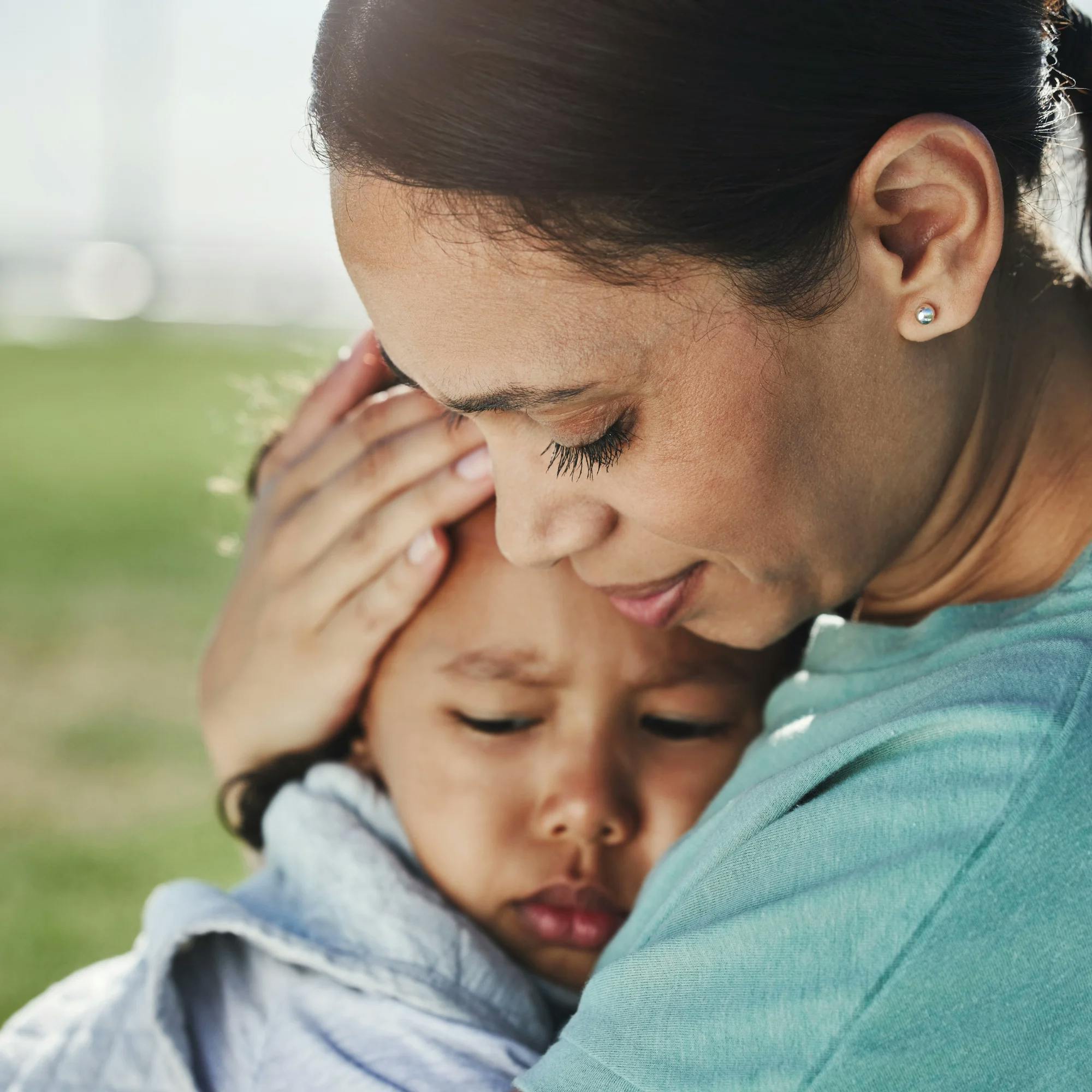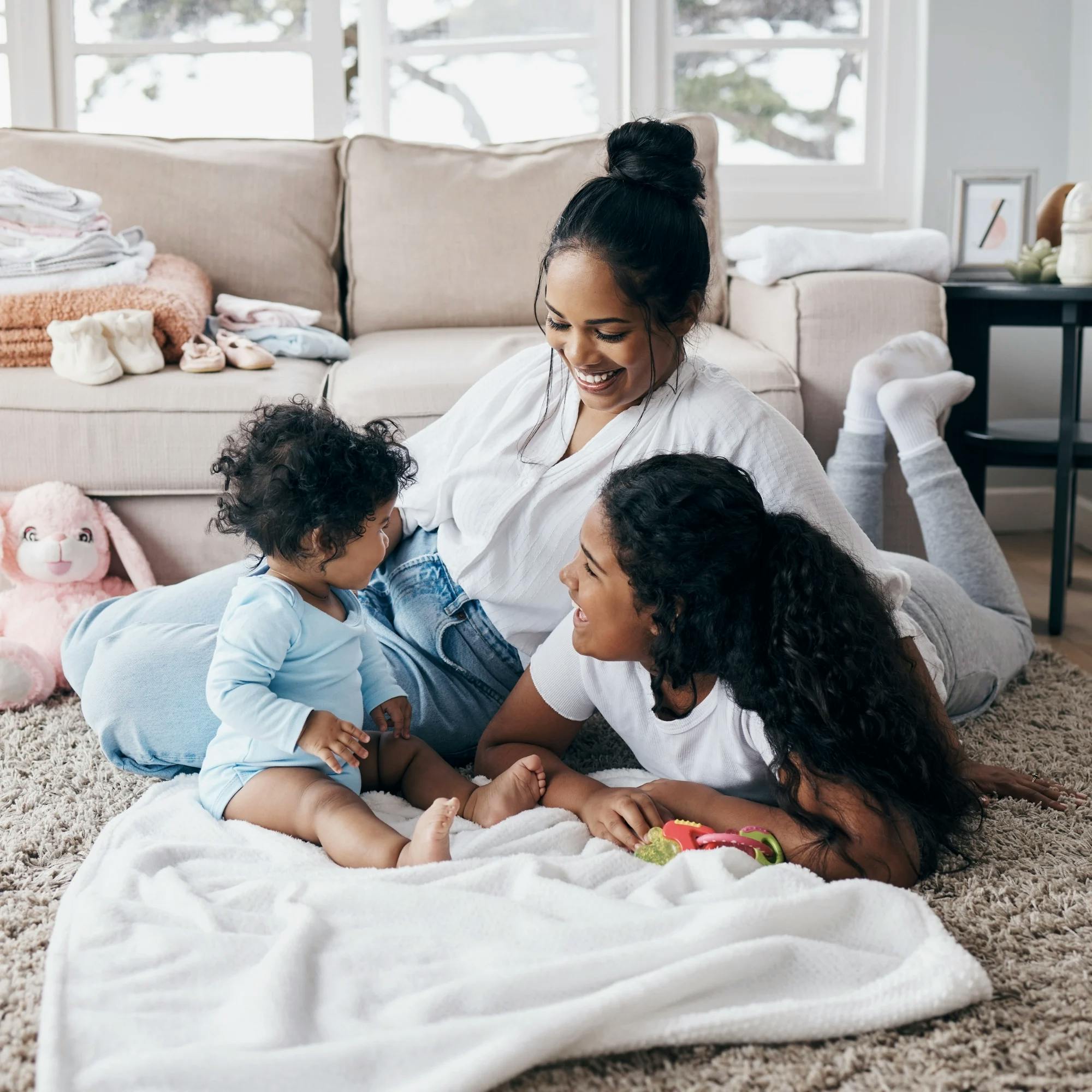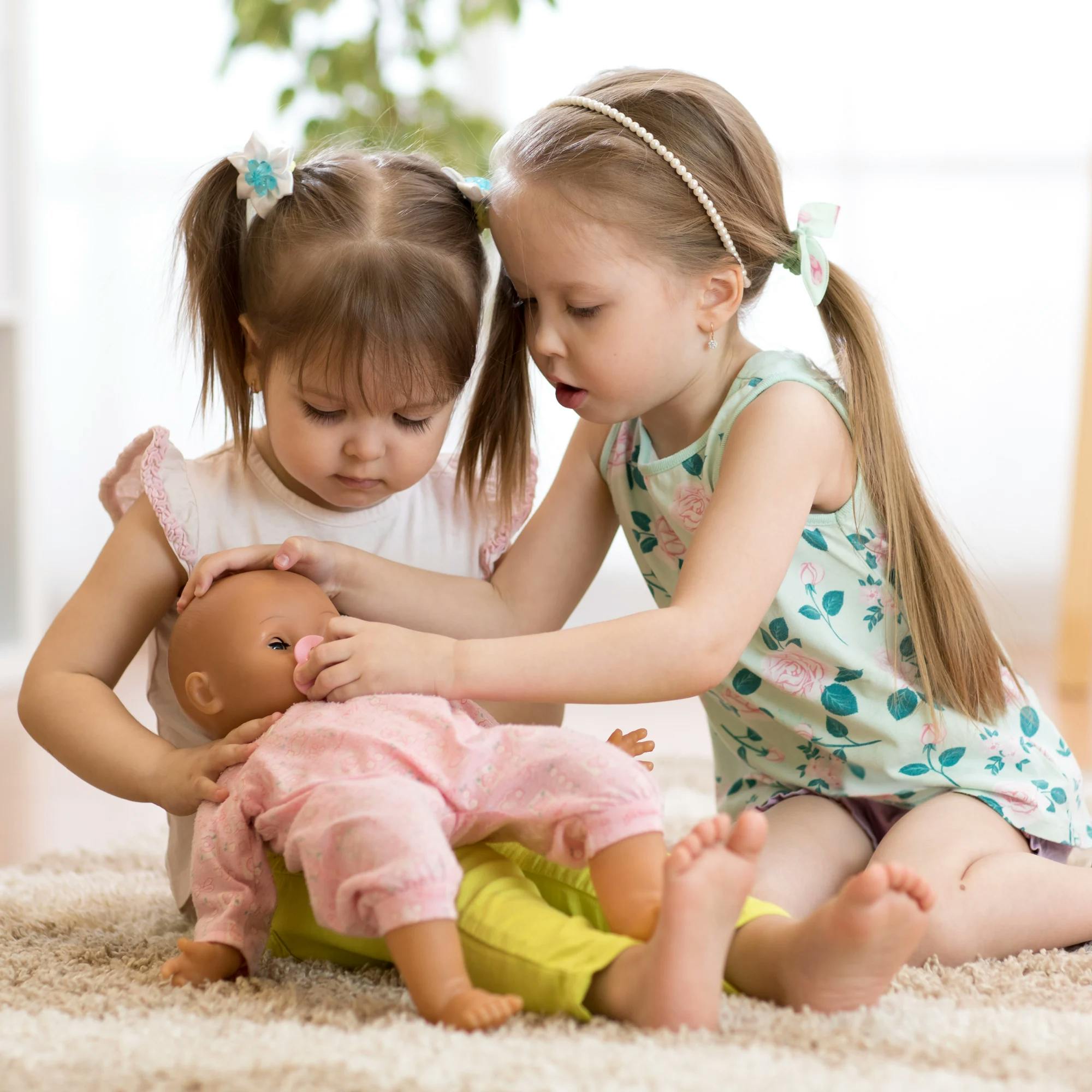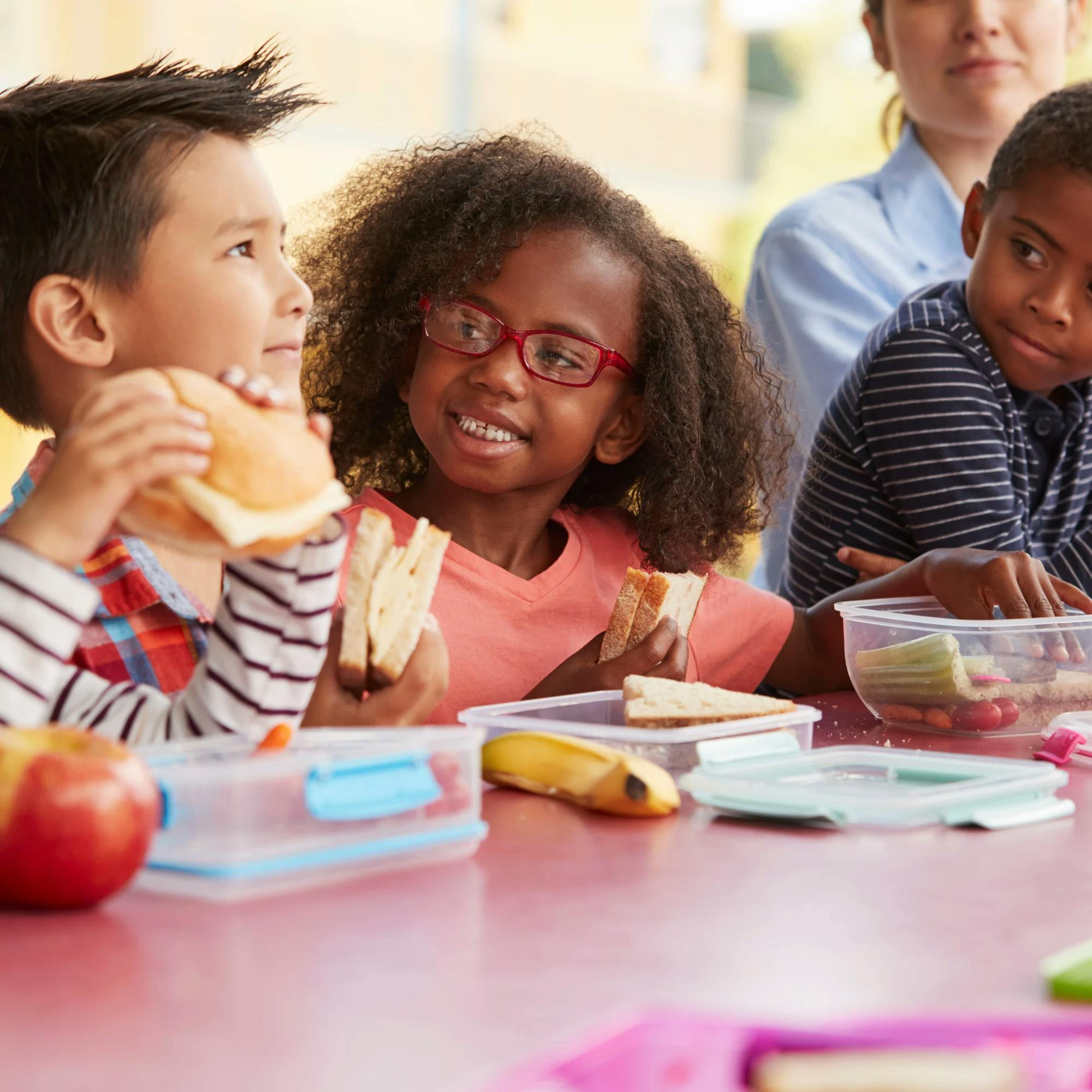
6 Early Social Skills in Children and How to Improve Them
 Alexis Irazoque, M.S., CCC-SLP
Alexis Irazoque, M.S., CCC-SLP
Helping your kiddo become socially adept is important for healthy childhood development. It’s how they learn to navigate the world around them and develop relationships with peers, teachers, and other adults. It even contributes to their success in school.
There’s a tendency to think that social skills emerge naturally by simply putting children in social settings. And while this is part of the process, the foundation for developing strong social abilities starts with early interactions with their parents and loved ones. Read on to learn what you can do at home to help your child develop six important social skills.
Parents have a key role to play
Just as your child’s early communication skills happen long before their first words, early social skills develop before your child starts preschool.
Children look to their caregivers as role models on how to behave and respond in different situations. They watch, learn, and absorb the social behaviors and interactions of adults around them. In other words, you’re the biggest influence in your young child’s life!


What are the benefits of early social skills?
We build and improve our social skills throughout our life. But this journey begins from the moment your child is born!
Strong social skills can help your child in several ways:
Understanding and paying attention to social cues, such as body language and tone of voice
Coping with big emotions, like anger or sadness, in a socially appropriate way
Recognizing and empathizing with other people’s emotions
Considering other people’s perspectives or opinions
Finding productive ways to resolve conflict
Forming and maintaining relationships and friendships
Forgiving others and expressing remorse


6 early social skills you can teach your child
1 Eye contact
Eye contact is one of the first social skills you may notice in your child. It’s also one of the first bonding experiences you have with your newborn, helping you both feel connected to each other. This ability to maintain consistent eye contact should begin around 2-3 months.
So why is eye contact so important? It establishes a connection with another person and shows that we're listening to them. We use eye contact in so many interactions throughout the day, from talking to friends to speaking with receptionists or checking out our groceries. Without establishing eye contact, verbal communication can feel awkward and lead to uncomfortable interactions.
Here are a few fun and simple ways to work on establishing and extending eye contact with your baby or toddler:
Make a silly faces at each other
Sing to your child
Play a game of peek-a-boo
Make silly sounds together


2 Joint attention
Joint attention is when two people are focused on the same object, person, or activity at the same time. It’s one of the most essential skills needed to develop strong social and language skills.
Let's take the simple act of bouncing a ball with your child. If they’re not paying attention to the ball, they won’t be able to participate in the game. In fact, to learn most new skills, children have to be focused on the object or instruction of another person. Otherwise, it’ll be nearly impossible for them to do these tasks in the future.
Joint attention is one of the precursors for the back-and-forth exchange of communication.
Establishing joint attention is also one of the precursors for the back-and-forth exchange of communication. When we speak with other people, we're both focused on the conversation. It helps each person listen, pay attention, and answer related questions.
For instance, if you point to an object and tell your child, “Look at that!,” you would expect your child to turn their head to look at the object. This can lead to a natural exchange where your child eventually answers questions and adds their own comments.


The good news is that there are many ways you can help your child improve joint attention throughout their daily life.
Singing. One simple activity that you may already be doing is singing with your child. Even if your child isn’t yet singing along with words, are they looking at you and smiling? This is a great sign!
During songs, one way to increase joint attention and get them participating is to leave a phrase open-ended. You could say something like, “Old McDonald had a farm--” and then wait for your child to complete the phrase with “E-I-E-I-O.” Maybe your child will maintain eye contact and wait expectantly for you to complete the phrase. Or maybe they'll complete it for you! Either way, both of you are focused on the same song at the same time.


Reading books. Reading is another great joint attention activity. While a toddler might not understand the plot of a story, pointing to pictures in a book and naming objects helps them focus their attention. For instance, you could say, “Oh wow. Look at that big train! Choo choo!”
If your child doesn’t seem to be paying attention, don’t be afraid to take their hand and point to the picture you’re describing. Try picking out one picture per page. Making this part of their nap or bedtime routine not only helps with joint attention, but helps establish pre-literacy skills as well.
Playing with a ball. As mentioned before, playing with a ball is an easy, effective joint attention activity. First show your child the ball, then establish eye contact. You can build up anticipation with “Ready, set…go!”


3 Back-and-forth vocalization
Long before you hear your child’s first magical words, they’ll begin to make lots of expressive sounds. This could be cooing, babbling, and other verbalizations.
In the first 3 months, babies will typically begin to coo and gurgle, and you might even hear their first laugh. These are the early stages of communication, where babies start to experiment with their voice. Around 3-6 months, a baby will begin to make more vowel sounds. You might even start to hear their first consonants, such as “bababa.”
During this stage of communication development, you should begin participating in back-and-forth vocalizations with your baby. This is when your baby will attempt to imitate a sound that you produce or even make a sound for you to repeat.
These back-and-forth sounds are meant to establish a connection with you and others.
These sounds are meant to establish a connection with you and others. Your baby is beginning to recognize the cause-and-effect of communication--first you say something, then they respond, and so forth. This is a huge communication milestone!
Children learn by imitating those around them. That’s why it’s never too early to start working on back-and-forth vocalizations with your little one.
To encourage your baby to imitate, try making simple sounds, such as “aaah” and “oooh.” Play around with your volume and intonation, and make sure to use exaggerated facial expressions. This will not only get your baby’s attention, but will increase their likelihood of imitating your sounds.
You can also practice environmental sounds, such as vehicles (vroom, beep beep) and animal sounds (meow, woof woof). As we mentioned before, pointing to these objects in books and making these sounds can increase both joint attention and back-and-forth vocalizations.
Finally, get in front of a mirror! Kids love being silly, so make funny faces, make exaggerated sounds, and sing songs. Establishing eye contact and joint attention in the mirror can keep your child engaged and increase opportunities to imitate your vocalizations.


4 Imitation of play
Imitation isn’t just the biggest form of flattery, it’s also how we learn. And that goes for playtime as well.
Playing is one of the most important parts of early childhood development. It’s how kids grow their social and language skills, problem solve, learn how to share and take turns, and understand their environment.
However, not all children figure out how to play or use a new toy on their own. They often need guidance to complete an activity, such as stacking blocks. This becomes even more true as they use more complicated toys, like a puzzle or Play-Doh.
When a child finally does figure out how toys work, they begin to understand cause and effect. If they stack the blocks too high, the blocks might fall as a result. If they push a toy car, it will drive on the track where they want it to go. The back-and-forth nature of communication follows the same rules of cause and effect.
Between the ages of 18 and 24 months, kids will start to develop their pretend play skills and begin using toys for their intended purpose.
For instance, instead of just banging toys together or mouthing them, they might enjoy pretending to cook in a kitchen or feed a stuffed animal. These are great activities to work on language and social skills.
If your child is giving their baby doll a bottle, provide some language cues such as “yum” or “ooh, it’s hot!”
If you’re playing with your child in their toy kitchen, narrate their actions such as “stir the batter” or “turn on the oven.”
If your child is speaking on a toy phone, say things like “hello” and “who is this?”
Take time each day to get down on the floor, play with your child, and as they get older, use toys appropriately. Give your child plenty of models of what you’d like them to do and imitate.


5 Turn-taking
Communication requires the ability to take turns. When one person talks, the other waits and listens, then responds. If we didn’t allow this turn-taking to happen, our conversational partners might feel frustrated. Likewise, if kids have difficulty with turn-taking, they might frequently interrupt others, speak without taking a pause, or not actively listen.
These skills are established early as kids learn how to take turns sharing toys with their family and peers. Many parents report that one of their child’s first words is “mine.” With some practice, this can develop into “my turn.”
Many of the simple activities we discussed above set the foundation for turn-taking. You can build turn-taking into stacking blocks, putting together a puzzle, rolling a car back and forth, or pretty much any game that requires two people! Make sure to use gestures to point out “my turn” and “your turn” to help your child learn that patience is required for turn-taking to happen.


6 Sharing
If your child is beginning to understand the concept of turn-taking, the next step is learning how to share.
This social skill isn’t just important at home (especially with siblings), but at school and pretty much every point throughout a person’s life. A child always wants something immediately. However, they might have to wait their turn or, even better, ask permission to share a toy they want. Sharing also helps them establish bonds with family and peers and begin to relate to others.
Because children learn through imitation, it's important to provide a model of sharing within the home.
Share a snack with your child and say “Here you go. I love sharing because it makes everyone happy!” Use positive reinforcement and give your child feedback throughout the day to reinforce this skill.
Practice with siblings or friends. For instance, give your child a toy and explain that they can share the toy with their sibling or take turns using it. If they have difficulty understanding this concept, use a visual cue such as a timer and set it for 5 minutes. Each child then gets to play with the toy for 5 minutes, so everyone gets a turn.
Using rewards, such as a sticker chart, can help a child become motivated to share. While many parents use this technique for potty training, it’s also a fantastic way to develop early social skills. Every time your child successfully shares, they get a sticker. And once they receive 10 stickers, they get some type of reward--maybe a favorite treat or some extra play time.
You may already be using some of these strategies with your child at home today. Keep up the great work!


The social skills your child learns in early development will help them establish and maintain strong connections with family and peers (and eventually spouses, colleagues and employers). They’ll become more socially adept and prepared once they enter school.
If you’re still concerned about your child’s social skill development, speak with your pediatrician or a speech-language pathologist. This is the first step in helping you and your child work on these early building blocks of communication.
How Expressable Can Help
Concerned your child isn't reaching age-expected milestones? Looking for communication support from a professional? Expressable is a national online speech therapy practice serving children and adults. We treat all major areas of communication and feeding, offer flexible hours including evenings and weekends, and accept most major health insurance plans. We’re proud to have earned more than 3,000 5-star reviews from our clients (4.9/5 average).
Our therapy model is centered on parent and caregiver involvement. Research proves that empowering caregivers to participate in their loved one’s therapy leads to better outcomes. That’s why we combine live, 1-on-1 speech therapy with personalized education and home practice activities for faster progress.
Communication is more than words. It’s how we share how we feel and show who we are. We’re here to help you or your child do just that.








